#eurybrachidae
Explore tagged Tumblr posts
Note
May I ask what this this buddy is? (Sorry for bad picture, had to SS a video). It was walking backwards up this ledge.
Location: Northeast India



Planthopper in NE India:
Hello, this is a planthopper in the genus Loxocephala, family Eurybrachidae.
This looks very much like Loxocephala aeruginosa, which does occur in that part of India. This insect does not have a common name in English.
233 notes
·
View notes
Text
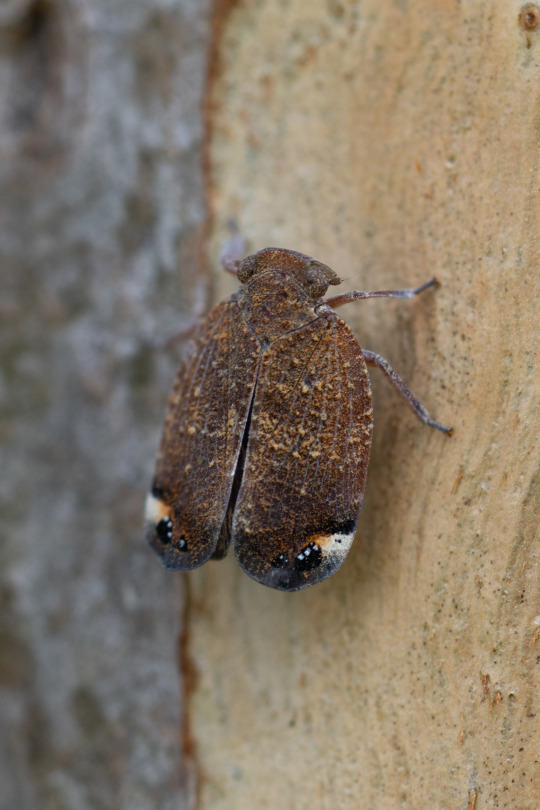
a Squathopper with some amazing eyespots, mimicking those of a jumping spider.
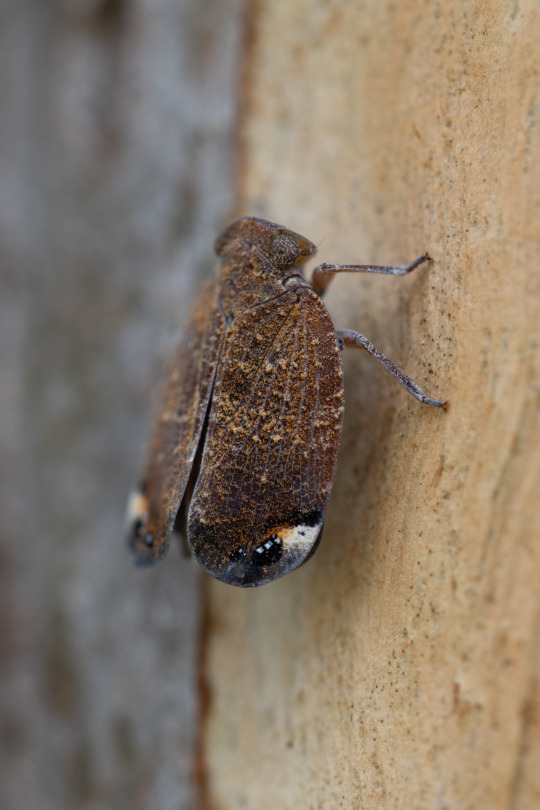
Unknown Squathopper (genus Platybrachys, likely P. vidua).
#ljsbugblog#bugblr#entomology#macro#insects#hemiptera#true bugs#fulgoromorpha#plant hoppers#eurybrachidae#squathoppers#platybrachys#unconfirmed id
40 notes
·
View notes
Text
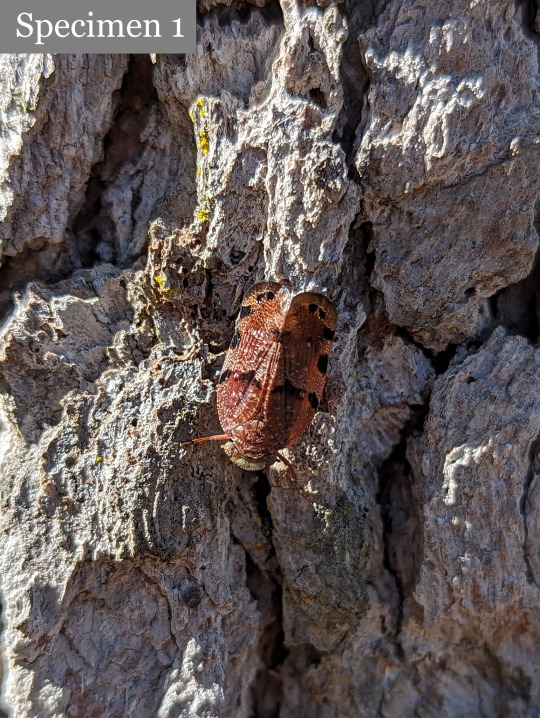
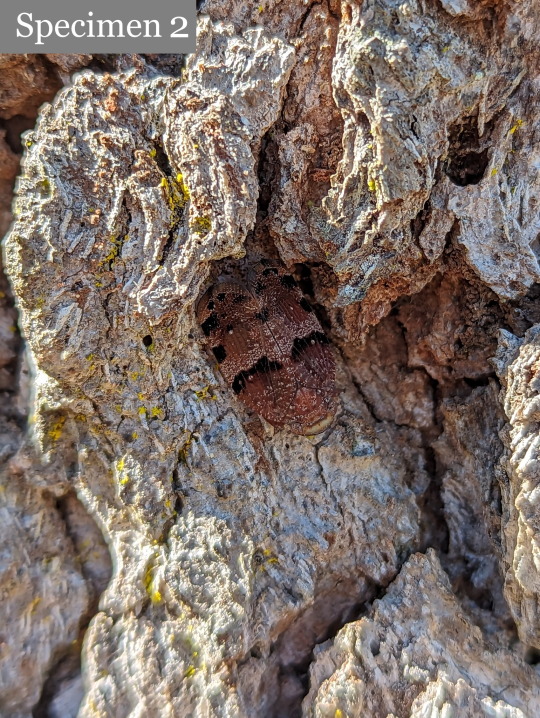


Squathoppers spotted on tall tree.
15/09/23 - Platybrachys sp.
QLD:BRB - Mt Archer National Park
#invertebrates#invertblr#arthropod#arthropoda#insects#insectblr#insecta#insects tw#insect#bugs#bugblr#bugs tw#bug#entomology#Platybrachys#unidentified#Eurybrachidae#Squathoppers#Fulgoromorpha#Planthoppers#Auchenorrhyncha#True Hoppers#Hemiptera
25 notes
·
View notes
Photo
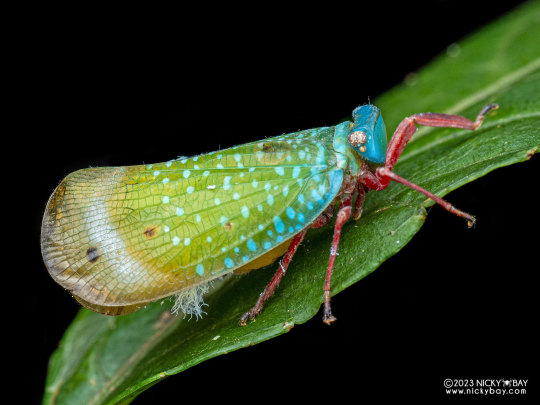

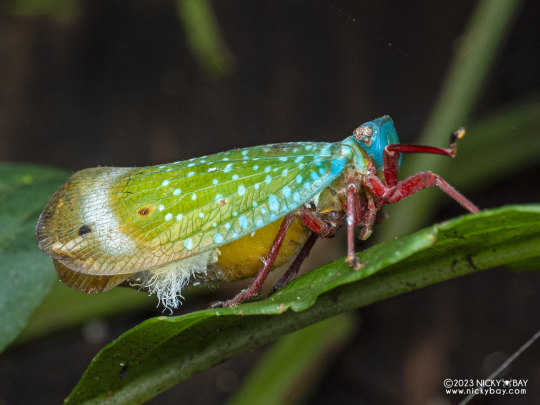
Planthopper, Loxocephala unipunctata, Eurybrachidae
Photographed in Thailand by Nicky Bay // Website // Facebook
Shared with permission; do not remove credit or re-post!
#animals#curators on tumblr#insects#bugs#true bugs#planthopper#squathopper#one nice bug#Loxocephala unipunctata#big fan of the little butt tufts sticking out from under their wings#which btw are natural excretions and not a fungus
793 notes
·
View notes
Text
Cooleenup Island Species List - HEMIPTERA
2023 - June 9th to 11th
12C-18.5C, 2.4mm-12.5mm rain, strong wind on Sunday
Parent Bug Hiarchas? (Acanthosomatidae, Subf. Blaudusinae) Flatbug Neuroctenus sp. (Aradidae) 3 Cicadellid planthopper spp.(Cicadellidae) Squathopper - Platybrachys? (Eurybrachidae) Native Lac Scale Austrotachardia sp. (Kerridae) Creiis periculosus on Flooded Gum E. rudis (Psyllidae) Feather-legged Assassin Bug Ptilocnemus lemur (Reduviidae) Corsair Bug (Reduviidae, Subf.Peiratinae) Unidentified Lygaeoid 1 sp. Unidentified Reduviid 1 sp. Unidentified Pentatomoid Bug 1 sp. Unidentified Scale Insect Icerya australis?
0 notes
Text
Quand les blattes remplacent les fourmis dans la trophobiose : un nouveau modèle de comportement vital majeur chez des familles d'hémiptères (cicadelles, fulgores...) a été découvert grâce à une sy...
See on Scoop.it - EntomoNews
The mutualistic interspecific relationships of trophobiosis between trophobiont planthoppers (Hemiptera, Fulgoromorpha) providing food to the host called xenobiont, are reviewed.
When Cockroaches Replace Ants in Trophobiosis: A New Major Life-Trait Pattern of Hemiptera Planthoppers Behaviour Disclosed When Synthesizing Photographic Data
Diversity, 01.03.2023
Thierry Bourgoin, Ilia Gjonov, Albena Lapeva-Gjonova, Sonia Roger, Jérôme Constant, Gernot Kunz et Michael R. Wilson
[Image] Graphical Abstract
-------
NDÉ
Traduction
Les relations mutualistes interspécifiques de trophobiose entre les trophobiontes (Hemiptera, Fulgoromorpha) fournissant de la nourriture à l'hôte appelé xénobiont, sont passées en revue. Le degré de relations interspécifiques entre ces symbiotes varie d'occasionnel ou de courte durée (quelques heures à quelques jours) à des relations plus longues, avec des trophobiontes laissés libres de s'échapper (type optobiotique) par le xénobionte, ou maintenus enfermés dans des nids ou des abris de fourmis (type cryptobiotique). Sur 267 cas collectés, 126 sont de nouvelles observations illustrées. La trophobiose occasionnelle est documentée dans 13 familles de cicadelles et semble être assez générale chez Fulgoromorpha, bien qu'elle soit signalée pour la première fois chez Dictyopharidae, Eurybrachidae, et Nogodinidae.
Les xénobiontes associés aux cicadelles sont signalés chez les fourmis et d'autres hyménoptères, lépidoptères et blattodea, mais aussi chez les mollusques et même chez de petits vertébrés gekkonides. Les Tettigometridae semblent être exclusivement entretenus par les fourmis, tandis que les Fulgoridae sont beaucoup plus souvent entretenus par les blattes (40 %) que par les fourmis (27 %).
La trophobiose à long terme se produit toujours avec les fourmis, les cryptobiotiques étant signalés chez les Cixiidae, Delphacidae, Tettigometridae, Meenoplidae, Flatidae et Hypochthonellidae, tandis que les optobiotiques restent limités aux tettigometrides. De nouvelles observations étho-écologiques sur 92 espèces de tettigometrides actuellement décrites permettent de mettre l'accent sur les Tettigometridae fréquentés par les fourmis.
32 espèces différentes (35%) sont désormais connues pour être fréquentées par les fourmis. En Bulgarie, où quatorze espèces sont présentes, la trophobiose se produit avec au moins cinq espèces d'entre elles (36%). Chez les tettigometrides, la sous-socialité, la sessilité et la vie souterraine semblent être des facteurs clés permettant des relations plus complexes avec les fourmis. Cependant, la taille de la cicadelle et donc la quantité de nourriture (gouttes de miellat) est probablement aussi un facteur important. Cela pourrait expliquer de nombreuses nouvelles observations de fulgoridés de grande taille et souvent isolés avec des blattes.
Le tapotement des ailes antérieures des trophobiontes par les blattes, les papillons de nuit, ou du substrat de l'écorce par les geckos a été observé, mais les comportements de palpation antennaire par les fourmis sont les plus fréquemment observés chez les tettigometrides, bien que ce ne soit pas le cas chez les plus grandes espèces. Chez les tettigometrides, des sécrétions spécifiques des glandes tégumentaires (allomones) des pleurites de l'abdomen pourraient également jouer un rôle dans leurs associations mutualistes à long terme, voire même compléter l'action des kairomones du miellat dans la trophobiose des sauterelles en général.
Mots clés :
trophobiose ; comportement ; fourmis ; blattes ; cicadelles ; Tettigometridae ; Fulgoridae
0 notes
Photo

Planthopper (Loxocephala aeruginosa, Eurybrachidae) One of a small family of visually and behaviourally remarkable Fulgoromorphs. by Sinobug (itchydogimages) on Flickr. Pu’er, Yunnan, China See more Chinese true bugs and hoppers on my Flickr site HERE.....
237 notes
·
View notes
Photo
Wow, this is an awesome photo collection and there’s a few ant-mimicking jumping spiders in there as well.

https://www.flickr.com/photos/rainforests/albums/72157625349930585/page2
THIS INSECT IS NOT A WEEVIL ITS WINGS AND TAIL JUST FORM A FAKE WEEVIL FACE WITH FAKE EYES AND FAKE ANTENNAE AND A FAKE SNOOT, ITS FACE IS ON THE RIGHT, IT’S A PLANTHOPPER
Not even the only astonishing thing under the link either, it’s a whole gallery of sometimes barely documented rainforest mimicy for page after page
#photos#Paul#mimicry#animals#arthropods#planthopper#Eurybrachidae#Hexapoda#Arachnids#Salticidae#always reblog Salticidae#Ancyra sp.#awesome#cryptic
4K notes
·
View notes
Photo







More insects from Northern Queensland.
From the top:
Orange Ringlet Hypocysta adiante (Nymphalidae: Satyrinae)
Mine of unidentified gracillariid moth larva
Nymph of an assassin bug (Reduviidae)
A rather stocky stick insect doing a marvelous imitation of a lichen covered stick on the bitumen.
A gryllid cricket with extravagant antennae (Gryllidae)
Plant hopper in the genus Platybrachys (Eurybrachidae)
8 notes
·
View notes
Text
#1655 - Platybrachys barbata - Teeth-marked Gum Hopper


Another find by Chuen Man Chang in Brisbane. This particular species is only known from that area.
The Broad-frons Planthoppers (Family Eurybrachidae, Tribe Platybrachini) are quite diverse in Australia. Adults are generally mottled for camouflage, and live on the trunk or larger branches of Eucalypts and Acacia. They may sidle off sideways, or even backwards, if they think they’ve been spotted, or if really pressed will leap off with a loud TICK and fly away.
Eurybrachid nymphs, on the other hand, have a pair of long wax filament attached to the end of their abdomen, and resemble small insects back to front They even walk backwards to complete the illusion. If attacked, they will leap forward, which confuses predators that were expecting them to jump the other way.
You may have noticed the white fluffystuff attached to her abdomen - that is the powdery wax they pack over and around their eggs, laid on the trunk of the host tree. It’s intended to protect the eggs, but it doesn’t work against the parasitic wasps that target them, or against any ladybeetles that find the eggmass and chow down.
4 notes
·
View notes
Photo





Platybrachys Gum Hoppers being cute.
Wellard and Beeliar, Perth
#platybrachys#gum hopper#eurybrachidae#eurybrachyidae#perth#planthopper#true bug#broad-frons planthopper
4 notes
·
View notes
Text
#35 - Eurybrachyid planthoppers

One of my co-workers had another insect for me to I.D. At least this time I could identify it without hesitation, since these bugs have a feature that's almost unmistakable. No good photos of the nymphs up at Wiki, alas, but there's some good ones at Brisbane Insects
0 notes